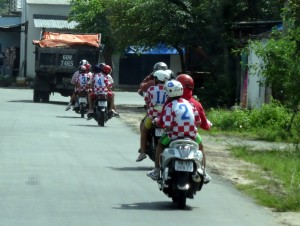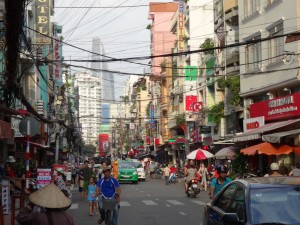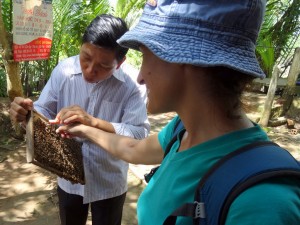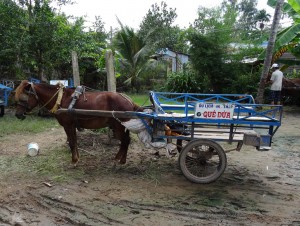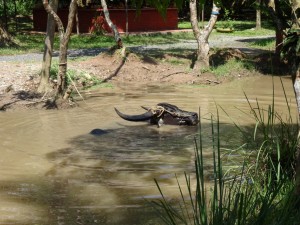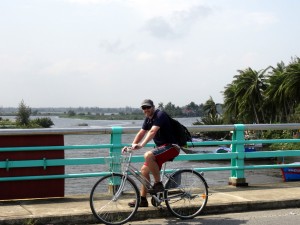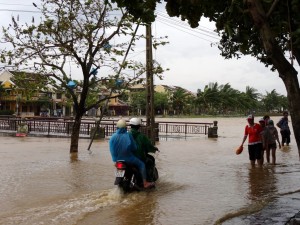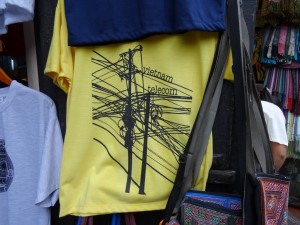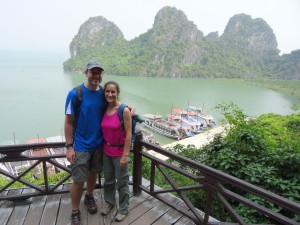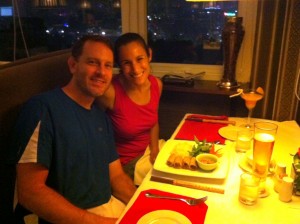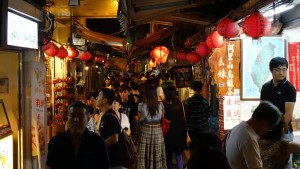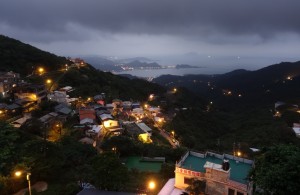Initially thinking we had a 4pm flight on our last partial day in Vietnam, we were planning a walking tour of the city. Turns out our flight was at 7:30pm, so we booked a half-day tour to the Cu Chi Tunnels. Cu Chi is a region about 60km northwest of HCMC. The tunnels were originally built during the French occupation in the 1940s and 50s, and then expanded during the Vietnam War. In addition to military use, some of the Cu Chi people actually lived in the tunnels during the wars.
Many of the real tunnels collapsed over the years or were destroyed by carpet bombing. The tunnels on the tour were created/restored as an attraction and enlarged to accommodate visitors (or as Ryan says, meat eating Westerners). Only after the very broad muscular guys in our group lowered themselves down one of the tiny holes did Ryan and I follow.


Next up was a shooting range where you could pay $1 per bullet and shoot any number of weapons from AK47s to M16s and M60s. I was definitely not a fan of the very loud gunfire, and it appeared the 2-year old in the group agreed. Ryan thought it added to the ambience of the place. We then had the chance to crawl through some tunnels. I made it 40 meters before calling it quits. Ryan went the full 100m, basically doing lunges the entire way, with a guide following closely, coming out at the hospital tent replica. He continued to pay for his decision (his words) over the next few days — reminiscent of Gary’s lunge workouts. The crouched position was rather uncomfortable and created a lot of stress on the knees and quads.

Last on the tour was a Cu Chi tunnel history (propaganda) video. It was a little light on the history, science, engineering, and very heavy on the anti-American agenda. Interesting to hear a different perspective on the war, but definitely made us feel uncomfortable.
During the van ride back to HCMC, our tour guide told us that the anti-American sentiment is just history at this point. He said even older veterans from the war seem to be embracing the western culture and capitalistic ways, mostly because there’s a strong sense of government corruption and the belief that Communism isn’t working.
Since there was still time before our flight, we had the van drop us off at the War Remnants Museum on the way back into town. This was an interesting interpretation of the ‘American War’, as the Vietnamese call it. But as is said, the victors write the history books. Overall, the only word I can think of to describe the entire day is ‘interesting’. I learned more about the Vietnam War than I ever learned in school (no U.S. History 2?), mostly from doing a lot of online reading and fact checking before and after the tour. Honestly, I do not think I would recommend the Cu Chi Tunnels or the War Remnants Museum as must see sites for U.S. tourists in HCMC.
Other interesting pictures from the day:
(Written jointly with Ryan)


